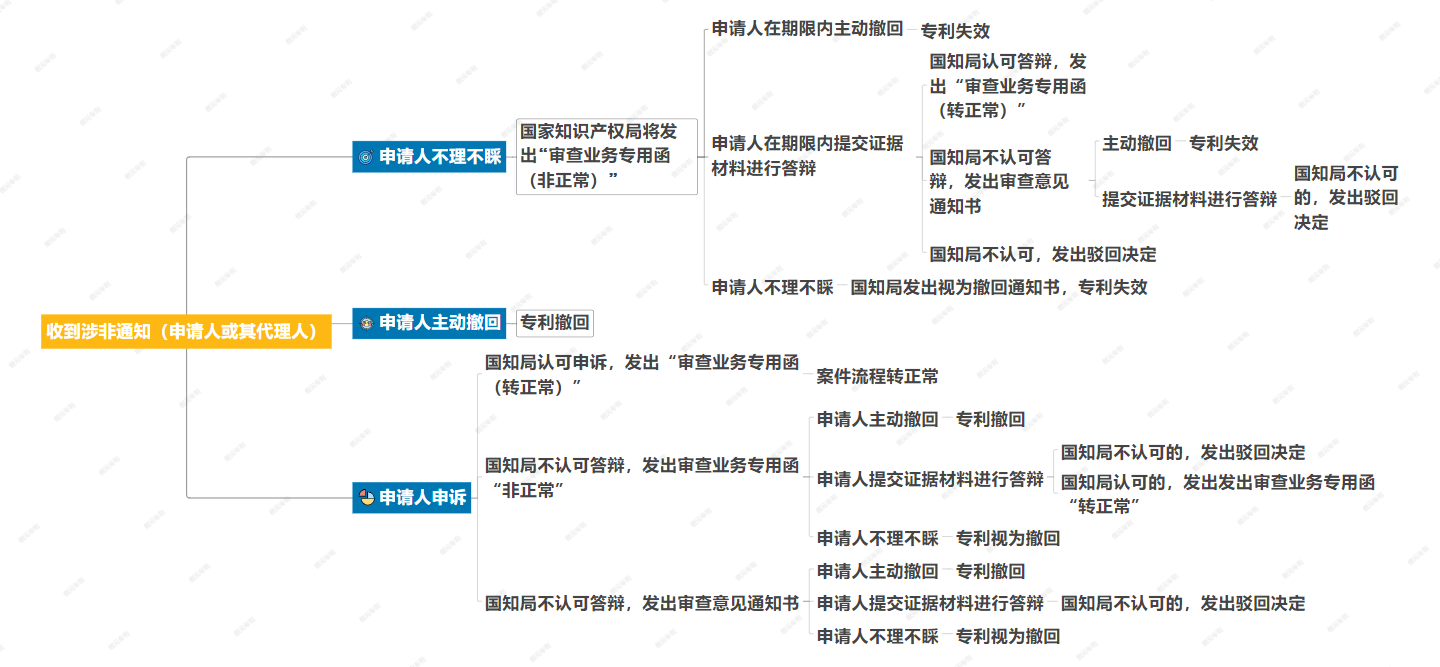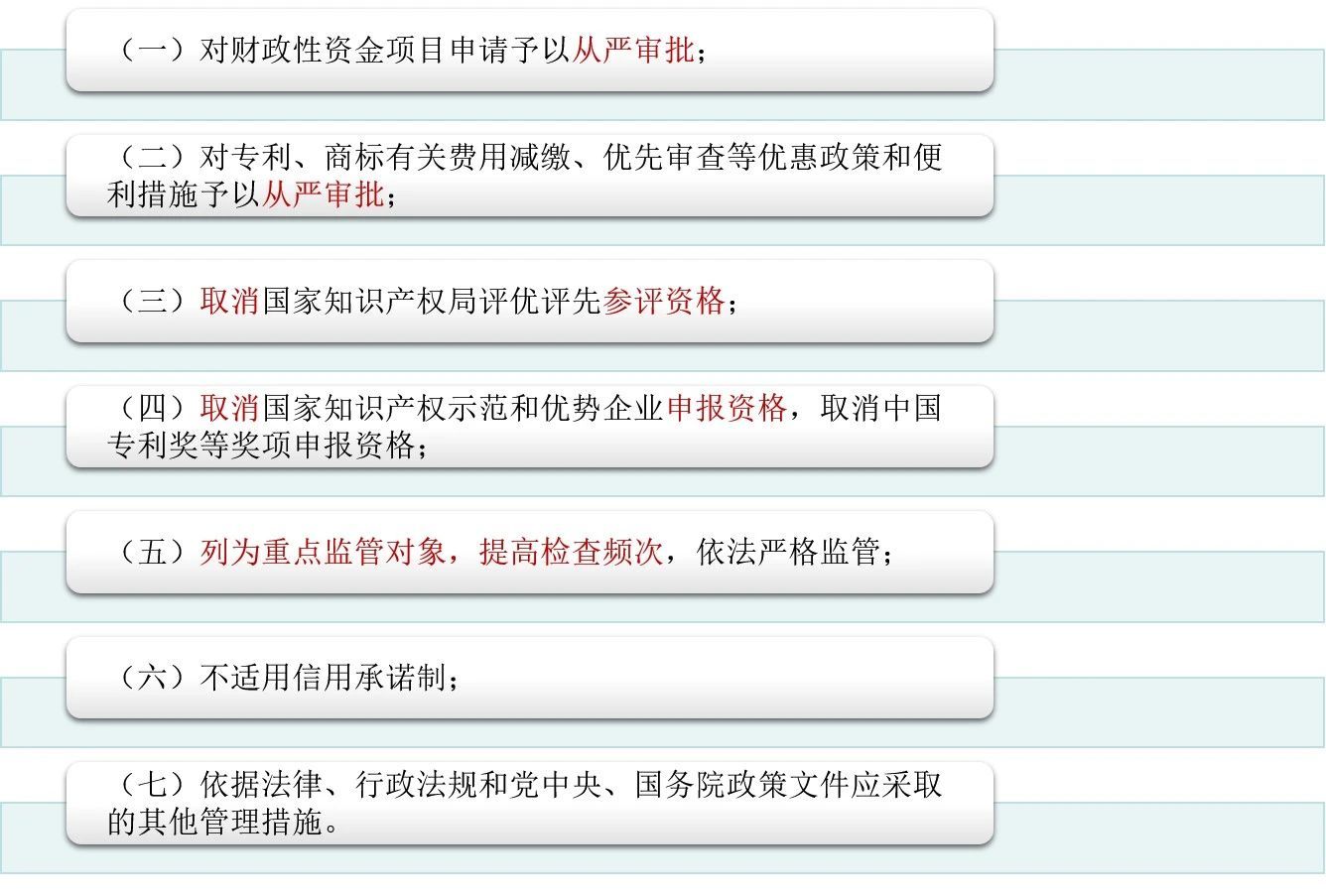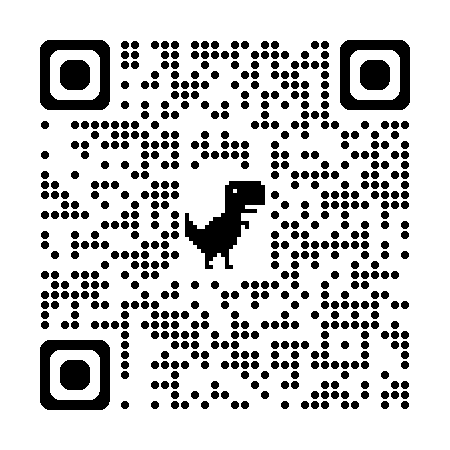07
2023-08
What happens if a patent application is identified as an abnormal patent application?
Non-normal patent applications, I believe everyone has heard of it.
For the official definition of abnormal patent application, please refer to the measures on standardizing the act of applying for patents issued by the announcement No. 411 of the State Intellectual Property Office (hereinafter referred to as the relevant measures), and the guidelines for the determination and handling of abnormal patent applications issued by the State Intellectual Property Office on May 26, 2023 (hereinafter referred to as the relevant guidelines).
If it is considered "abnormal", what will happen?
Take a look with me.
1.Was initially identified as abnormalPatentApplication, what happens?
According to the provisions of Article 3 of the relevant measures, if it is initially identified as abnormal, the relevant departments will notify the applicant. At this time, the applicant can have three choices:

Option 1, active withdrawal
This may be the most popular choice for relevant departments. If the patent is withdrawn voluntarily, the patent will end here, and then there is no more.
[Don't have a "then", for example, don't take the same content or make a little change, and submit a patent application again. If you do this, it will be considered to be a big bad thing, and it is very likely Will "share things"] "].
Option 2: Appeal
A complaint is the submission of a complaint and related evidentiary materials to show that the patent is not abnormal. When the complaint materials are submitted, there may be three situations:
Case 2a: If the appeal is successful, the State Intelligence Bureau issues a "normal" letter;
Case 2b: The appeal fails and the State Intelligence Bureau issues an "abnormal" letter;
Case 2c: If the appeal fails, the State Intelligence Bureau will issue a "Notice of Review Opinion".
Case 2a, that is, the appeal is successful, the patent continues to operate in accordance with the original track, the authorization, the authorization; the rejection, the rejection; the transfer, the transfer; the payment, the payment, the rights protection, the rights protection.
In both cases 2b and 2c, the initial appeal failed. In both cases, the applicant still has a chance to reply, but if the reply cannot convince the State Intelligence Bureau, the patent will face rejection. The difference between cases 2b and 2c is that in case 2b, the relevant documents clearly record the treatment plan when the reply is convincing, while in case 2c, there is no record of how to deal with it if the State Intelligence Bureau thinks it is convincing.
This may imply that if the State Intelligence Bureau receives a notice of examination opinion after the complaint, it is almost impossible for the applicant to convince the State Intelligence Bureau that the patent is doomed to be rejected?
Option 3: Ignore.
After receiving the notice, the applicant can theoretically ignore it. After that, the applicant will receive an "abnormal" letter issued by the State Administration of Knowledge. After receiving the letter, the applicant can further choose to withdraw voluntarily, reply to the complaint and ignore it. At this time, if the patent is withdrawn voluntarily or ignored, the patent will become invalid. If you respond to a complaint, there are three situations:
Case 3a: The reply to the complaint is successful, and the State Intelligence Bureau issues a "normal" letter;
Case 3b: Failure to reply to the complaint, the State Intelligence Bureau issues a "Notice of Review Opinion";
Case 3c: If the reply to the appeal fails, the State Intelligence Bureau issues a "rejection decision".
Scenarios 3a and 3b correspond to scenarios 2a and 2c, respectively, and will not be repeated; scenario 3c means that the appeal is a complete failure.
Comparing option 3 with option 2, it can be seen that if you ignore it at the beginning and then appeal again, the chance of appeal is obviously less and the possibility of success of appeal is obviously less. Therefore, if you want the case to have a good result, you must appeal at the beginning, and you must not ignore it.
2. How to determine whether a case is ultimately considered "abnormal"
Neither the relevant measures nor the relevant guidelines provide a clear record of "where the final determination is made. Since we do not have any actual cases, we can only speculate roughly: should the relevant records appear in the rejection decision?
3What will happen if there is an abnormal real hammer?
According to the relevant measures, for the applicant, if it is found to be abnormal, then:
First, for this recognized abnormal patent application, the official fee has been reduced, and if the payment has been reduced, the reduced fee is required to be paid.PS:1-2 patents, which is not much money,PatentMany words, or quite a lot. Applicants who cannot enjoy reduced contributions can be ignored.
Second, for applicants with serious (relatively large amount) circumstances such as repeated offenders, no reduction in official fees will be paid within five years. This is quite scary for applicants with a large number of patents. However, applicants who cannot enjoy the reduction in payment do not seem to have any practical impact.
If you think that there are only these above and that this is nothing, then the pattern Tucson is broken.
The "Regulations on the Administration of Intellectual Property Credit of the State Intellectual Property Office" (hereinafter referred to as the relevant regulations) just released in January 2022 may be known to many people, or many people may not know.
Article 6 of the relevant regulations specifically lists seven types of dishonest behaviors, among which the top one is the abnormal patent application behavior that (I) not for the purpose of protecting innovation. In conjunction with Article 8, the State Intellectual Property Office shall implement the following management measures for the subject of breach of trust:

In short, it is an applicant who is identified as an abnormal application and will subsequently:Financial money is more difficult to get (or not), good things are not coming, things are more difficult to do, and patents are more difficult to authorize..
It is difficult to do. For example, if it is found to be abnormal, it means that you will not be able to obtain pre-qualification within a certain period of time. When you see someone else apply for a three-month authorization for the invention, you can only worry and don't even have a chance. Even if you have obtained the pre-qualification, if you are abnormal, you have to suspend or cancel it. Take Suzhou Intellectual Property Protection Center as an example. If there are 2 abnormal applications within one year and the appeal fails, the pre-qualification service will be suspended for more than half a year. If 2 or more applications are deemed to be abnormal in one year and the appeal fails, the filing qualification will be canceled and the application will not be accepted for three years. The preliminary examination is not good, and the excellent trial is not good? Although there is no abnormal case yet, all of them will not be given an excellent trial, but the abnormal case is just like an infectious disease, because some cases are abnormal, the applicant is focused on, so the probability of other cases being abnormal is greatly increased.
Patents are more difficult to authorize. For example, if you submit a patent application document, for the applicant (or the agency) that is focused on, the examiners at all levels may not examine with "naked eyes" but with "magnifying glass and microscope". They may require social security proof or sufficient research and development strength proof. Even if the applicant provides it, the examiners may not be steadfast, because I can't believe it's true. If I don't mention it, they will be even more steadfast. Have they given it or not, that's a question!
It should be noted that the relevant measures, relevant guidelines and relevant regulations mentioned above are only the regulations of the State Intellectual Property Office. It is not ruled out that a few local bureaus may make some upgrades (overweight), refinements or other supporting facilities, and relevant departments in other countries may have already made targeted relevant regulations or regulations are on the way.
In summary, to build a good patent protection ecology, whether the applicant or the agent, the patent application should be held, appropriate to hold.Heart of Awe, do not subjectively not abnormal, objectively try to avoid abnormal. Of course, if extremely careful still involves abnormal and accidental injuries, don't be afraid, carefully prepare materials to appeal, there is a high probability that there will be good results.

undefined





